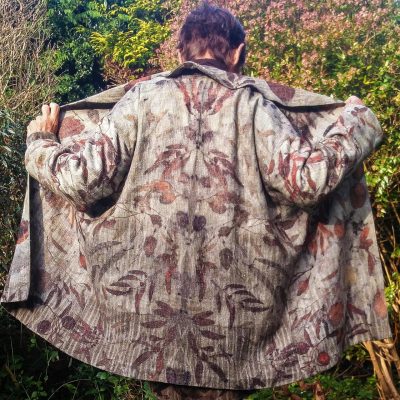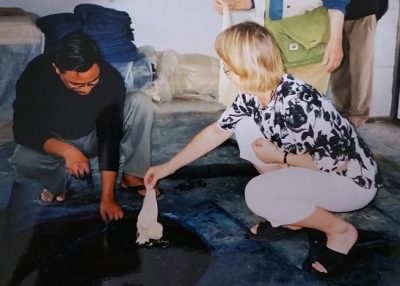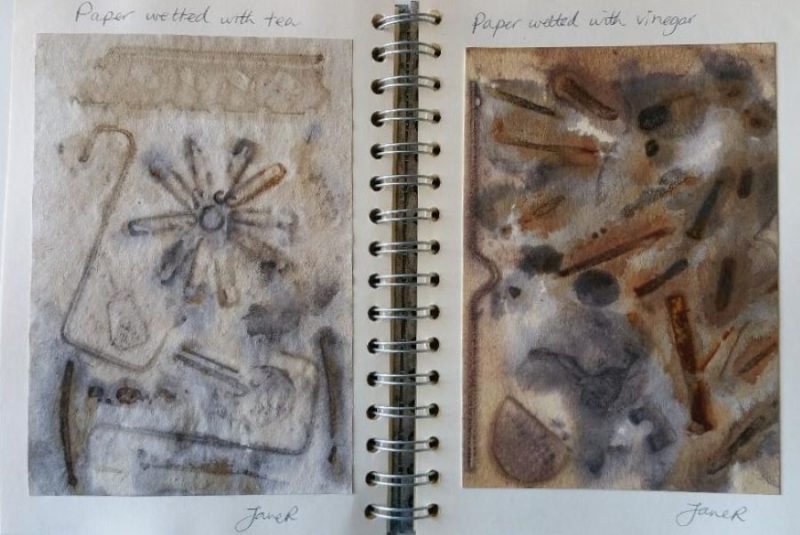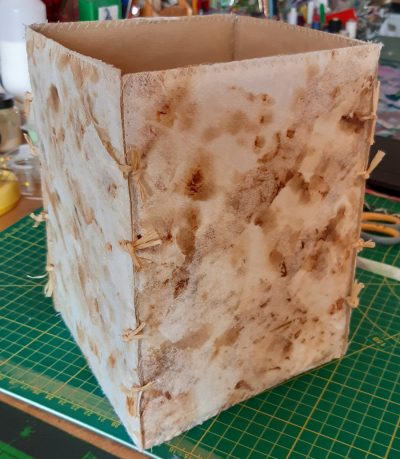
We had a wonderful introduction to the magical and mysterious processes of eco-dyeing for our April Zoom meeting. Caroline Nixon, textile artist, told us about the art of producing plant-based images on fabric through the process of layering, binding and steaming.
Caroline spoke about the benefits of using natural processes, including the rich, subtle, harmonious colours and images that are produced; enjoying the element of surprise: preserving traditional arts: and the fact that it is so much better for the environment than using chemicals.
Surprisingly, the colour of the plant is no indication of how well it will dye or how long-lasting the dye will be. Caroline told us about the mordanting process that can make some plant dyes long-lasting by binding the colour to the fibre. One useful tip for plant variety; once you have exhausted your garden and if you don’t have easy access to the countryside, you can ask your local florist for the leaves that they have discarded in their bins!
We also heard about shibori, the art of producing patterns in dyed fabrics through tying, stitching or clamping the fabric to create areas that resist the dye. Indigo is a wonderful plant dye to use with this technique.  (As an aside, the photo above was taken in India when my sister-in-law and I had an indigo-dyeing lesson. In a wonderful wardrobe malfunction, my sister-in-law turned up in white trousers. However, she did manage to end the day with the trousers still pristine white – what an achievement!). After Caroline’s talk, several of us were saying that it would be great to have an indigo-dyeing day when we can do some tie-dye/shibori – an idea for the future. It needs to be taught by someone who knows what they are doing, as there is quite an art to having the indigo vat ‘live’.
(As an aside, the photo above was taken in India when my sister-in-law and I had an indigo-dyeing lesson. In a wonderful wardrobe malfunction, my sister-in-law turned up in white trousers. However, she did manage to end the day with the trousers still pristine white – what an achievement!). After Caroline’s talk, several of us were saying that it would be great to have an indigo-dyeing day when we can do some tie-dye/shibori – an idea for the future. It needs to be taught by someone who knows what they are doing, as there is quite an art to having the indigo vat ‘live’.
There are so many things that can be done with eco-dyed fabric. Caroline showed us images of her work where she has dyed, printed, over-dyed, stitched and quilted. The resulting cloth can be used for so many things – clothing, furnishings, or just to enjoy as a work of art.
One of the ‘Travelling Scrapbooks’ going round the group at the moment is Lindsey’s book on ‘Rust’. This has inspired some of us to have a go at rust dyeing. It would be lovely to have a day being shown how to do this properly, but it was fun to start with some experiments. Here are a few things that have been put in the book so far.



Recommended books:
Jenny Dean: ‘Wild Colour’.
Alice Fox: ’Natural Processes in Textile Art: From Rust Dyeing to Found Objects’.
Caroline Nixon’s website: https://www.handmadetextilesbycaroline.co.uk/

